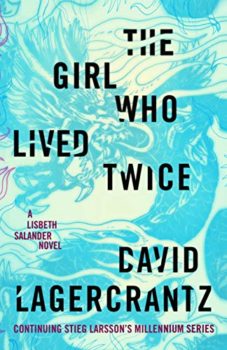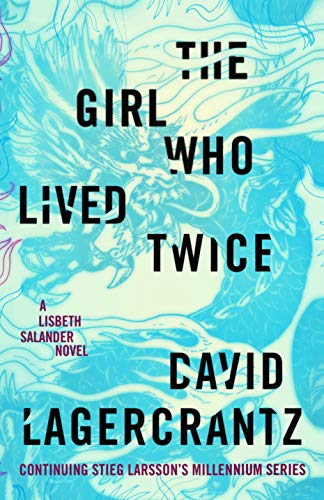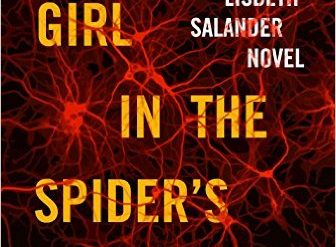
Here’s a novel that brings together the Swedish Minister of Defense, a doomed ascent of Mount Everest, Russian mobsters and the GRU, and a paranoid schizophrenic Sherpa guide, with Stieg Larsson‘s mismatched couple, Mikael Blomqvist and Lisbeth Salander. And she, Lisbeth, is still called a girl even though she’s got to be well into her thirties at least. Does that all sound nuts, or what? Yet unaccountably we read it, from beginning to end. Why? What is it about this insanely unlikely story that keeps us turning the pages to the bitter end? Yes, I confess, that is exactly what I experienced with the new Lisbeth Salander novel, The Girl Who Lived Twice.
Estimated reading time: 3 minutes
So, here’s my take on why we read this stuff
- The principals, Lisbeth Salander and Mikael Blomqvist, are endlessly engaging. Salander is a feminist fantasy figure who confounds every conceivable misogynist misconception. (“No-one’s less like someone’s girl than she is. She’s a bit like the fallen angel in paradise, isn’t she? She serves nobody, belongs to nobody.”) And Blomqvist is a romanticized version of Stieg Larsson, author of the first three Lisbeth Salander novels and himself a notable investigative journalist. (Currently, a book about his investigation into the murder of Swedish premier Olof Palme is on the bestseller lists.)
The Girl Who Lived Twice (Lisbeth Salander #6) by David Lagercrantz (2019) 368 pages ★★★★☆
- The simplistic clash between good (Salander and Blomqvist) and evil (Salander’s odious father and sadistic Russian mobsters) panders to our desire for a simpler world. We know, of course, that life can’t possibly be painted so starkly in black and white, but it’s comforting for a time to be carried away on a fantasy that it is.
- Lagercrantz’s plotting, like that of Larsson before him, is challengingly complex. He manages to weave together the tales of a seemingly endless cast of characters whose connections aren’t entirely clear (if at all) until many pages after they’re introduced.
The new Lisbeth Salander novel is a little like cotton candy
To be clear, this is not Literature with a capital L. The writing is pedestrian at best (although it might have lost something in the translation from the Swedish). But it simply doesn’t matter when the story forces us to keep turning the pages to learn how things turn out. Naturally, we’ve known all along how the story would end. And that’s comforting, too. The book is a little like cotton candy. It produces a sugar rush, but not for long. Of course, it’s a lot of fun while it lasts.
For related reading
You’ll find my reviews of all the previous Lisbeth Salander novels at The magical Lisbeth Salander novels. And you can roam further into the realm of Scandinavian noir at The best Nordic noir series from Sweden, Norway, Denmark, and Iceland.
You might also enjoy my posts:
- Top 10 mystery and thriller series
- 20 excellent standalone mysteries and thrillers
- 30 outstanding detective series from around the world
- Top 20 suspenseful detective novels
- Top 10 historical mysteries and thrillers
And you can always find my most popular reviews, and the most recent ones, on the Home Page.



























